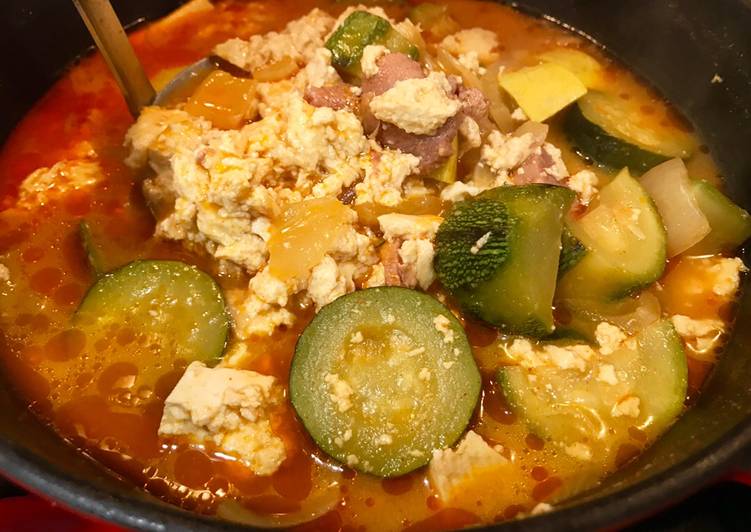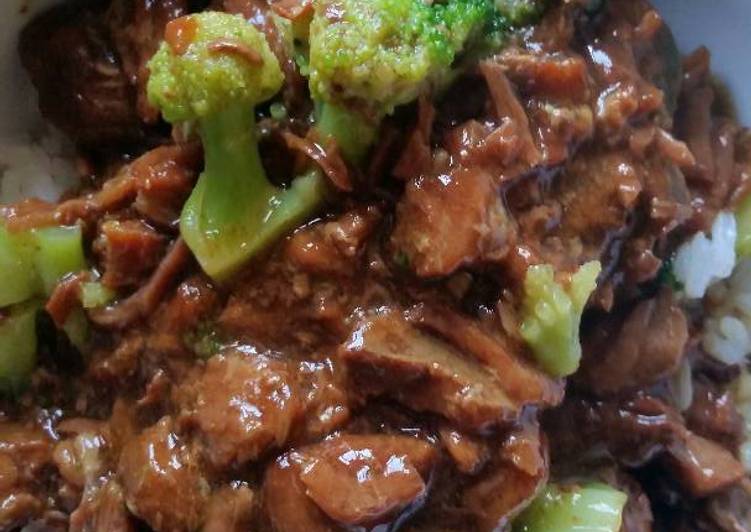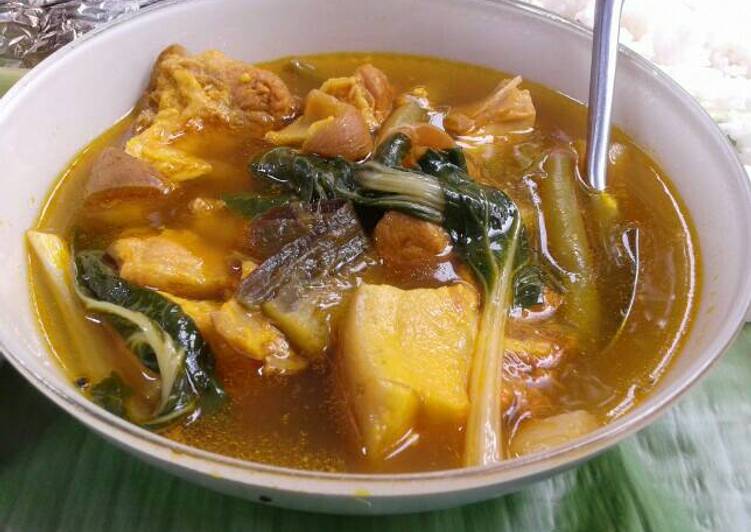
Hello everybody, it’s Louise, welcome to my recipe page. Today, I will show you a way to make a distinctive dish, spicy hobak jjigae (korean squash stew) with pork & tofu. It is one of my favorites food recipes. This time, I will make it a bit tasty. This will be really delicious.
Spicy Hobak Jjigae (Korean Squash Stew) with Pork & Tofu is one of the most well liked of recent trending meals on earth. It’s appreciated by millions daily. It’s simple, it is fast, it tastes yummy. They are nice and they look wonderful. Spicy Hobak Jjigae (Korean Squash Stew) with Pork & Tofu is something that I have loved my whole life.
Great recipe for Spicy Hobak Jjigae (Korean Squash Stew) with Pork & Tofu. Jjigae (TCHEE-geh) is Korean for stew and, as in English, refers to any number of heartier (and in the case of Korean food, more pungent) dishes that are thicker than soup, which, in Korean culture is considerably more. If using pork (or beef), preheat the pot with a little bit of oil.
To get started with this particular recipe, we have to first prepare a few ingredients. You can cook spicy hobak jjigae (korean squash stew) with pork & tofu using 9 ingredients and 5 steps. Here is how you cook it.
The ingredients needed to make Spicy Hobak Jjigae (Korean Squash Stew) with Pork & Tofu:
- Take 1/2 onion, diced
- Prepare 1-2 jalapeños, cut into 1/8" thick slices
- Prepare 2-4 garlic cloves peeled and smashed (or chopped)
- Get 1/2 pound pork shoulder, thinly sliced
- Take 1/4 cup dwenjang (Korean soybean paste) OR miso (which is the Japanese version)
- Take 1/4 cup gochujang (Korean chili paste)
- Make ready 4 cups water
- Make ready 4 cups calabacita squash or zucchini, cut into 1/2" thick slices (about 2 to 3 medium squashes)
- Make ready 1 (14 oz.) package tofu (can be any firmness)
Also, don't cook the pork too long or it can tend to become tough and chewy. Gochujang Hobak Jjigae - Spicy Zucchini Soup Anchovy stock. Many Korean dishes rely on anchovy stock as the base flavor, not unlike dashi stock in Japanese dishes. If you have a reliable access to Korean market, you can pick up a packet of dried anchovies.
Instructions to make Spicy Hobak Jjigae (Korean Squash Stew) with Pork & Tofu:
- Put all ingredients except squash and tofu in a pot, cover, turn the heat to medium high, and cook for 15 minutes.
- Give the jjigae a few good stirs. You'll see the jjigae change color as the dwenjang and gochujang dissolve into the broth. Let the jjigae continue cooking uncovered for 2 to 3 minutes until it comes to a boil.
- Add squash, give it a few good stirs, and cook another 15 minutes covered.
- Crumble tofu into the jjigae. (This is not typical - usually it's cut into cubes or slices - but I like it this way because the tofu picks up more flavor from the broth.) Cover and cook another 10 minutes. - - Don't worry that the broth is constantly boiling rather than simmering. Jjigae gets its well developed pungency from this constant application of higher heat and the resulting compounding, melding, and reduction of flavors.
- At this point, give everything another good stir and see if you need to adjust the seasoning. If it tastes fine, you're done. - - If a little too salty, add a touch of water. If you want more saltiness, you can add a little more dwenjang and/or gochujang, remembering that the gochujang is much hotter (as in spicy) than the dwenjang. - - If you do adjust the seasoning, let it boil another 4 or 5 minutes to let the new level of seasoning meld. - - That's it. Enjoy!
Alternatively, you can also use anchovy stock granules to make the stock. Easier and a bit more approachable than absolutely authentic kimchi jjigae. I took the Korean fish stock out of the recipe. No pulling the guts out of dried anchovies here. Just some simple chicken stock instead.
So that’s going to wrap it up for this exceptional food spicy hobak jjigae (korean squash stew) with pork & tofu recipe. Thank you very much for your time. I’m confident that you will make this at home. There is gonna be interesting food in home recipes coming up. Remember to save this page on your browser, and share it to your loved ones, colleague and friends. Thanks again for reading. Go on get cooking!

